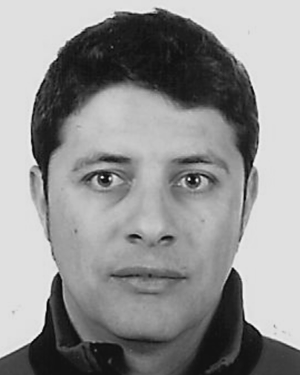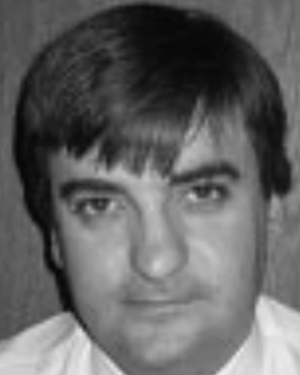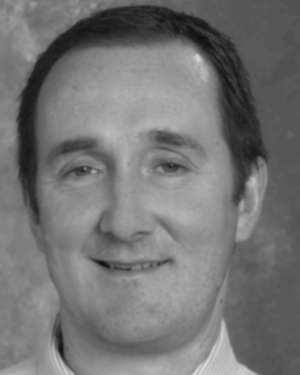Abstract:
Repolarization alternans or T-wave alternans (TWA) is a subject of great interest as it has been shown as a risk stratifier for sudden cardiac death. As TWA consists of s...Show MoreMetadata
Abstract:
Repolarization alternans or T-wave alternans (TWA) is a subject of great interest as it has been shown as a risk stratifier for sudden cardiac death. As TWA consists of subtle and nonvisible variations of the ST-T complex, its detection may become more difficult in noisy environments, such as stress testing or Holter recordings. In this paper, a technique based on the empirical-mode decomposition (EMD) to separate the useful information of the ST-T complex from noise and artifacts is proposed. The identification of the useful part of the signal is based on the study of complexity in the EMD domain by means of the Hjorth descriptors. As a result, a robust technique to extract the trend of the ST-T complex has been achieved. The evaluation of the method is carried out with the spectral method (SM) over several public domain databases with ECGs sampled at different frequencies. The results show that the SM with the proposed technique outperforms the traditional SM by more than 2 dB. Also, the robustness of this technique is guaranteed as it does not introduce any additional distortion to the detector in noiseless conditions.
Published in: IEEE Transactions on Biomedical Engineering ( Volume: 57, Issue: 10, October 2010)

Department of Signal Theory and Communications, Universidad de Alcalá, Madrid, Spain
Manuel Blanco-Velasco (s'00–M'05–SM'10) received the B.Sc. degree from the Universidad de Alcalá, Madrid, Spain, in 1990, the M.Sc. degree from the Universidad Politécnica de Madrid, Madrid, in 1999, and the Ph.D. degree from the Universidad de Alcalá, in 2004, all in telecommunication engineering.
From 1992 to 2002, he has been an Assistant Professor in the Department of Circuits and Systems, Universidad Politécnica de Ma...Show More
Manuel Blanco-Velasco (s'00–M'05–SM'10) received the B.Sc. degree from the Universidad de Alcalá, Madrid, Spain, in 1990, the M.Sc. degree from the Universidad Politécnica de Madrid, Madrid, in 1999, and the Ph.D. degree from the Universidad de Alcalá, in 2004, all in telecommunication engineering.
From 1992 to 2002, he has been an Assistant Professor in the Department of Circuits and Systems, Universidad Politécnica de Ma...View more

Department of Signal Theory and Communications, Universidad de Alcalá, Madrid, Spain
Fernando Cruz-Roldán (M'98–SM'06) was born in Baena, Spain, in 1968. He received the B.S. degree from Universidad de Alcalá (UA), Madrid, Spain, in 1990, the M.S. degree from the Universidad Politécnica de Madrid (UPM), Madrid, in 1996, and Ph.D. degree from UA, in 2000, all in telecommunication engineering.
In 1990, he joined the Department of Ingeniería de Circuitos y Sistemas, UPM, where he was an Assistant Professor fr...Show More
Fernando Cruz-Roldán (M'98–SM'06) was born in Baena, Spain, in 1968. He received the B.S. degree from Universidad de Alcalá (UA), Madrid, Spain, in 1990, the M.S. degree from the Universidad Politécnica de Madrid (UPM), Madrid, in 1996, and Ph.D. degree from UA, in 2000, all in telecommunication engineering.
In 1990, he joined the Department of Ingeniería de Circuitos y Sistemas, UPM, where he was an Assistant Professor fr...View more

Department of Ingeniería de Circuitos y Sistemas, Universidad Politécnica de Madrid, Madrid, Spain
Juan Ignacio Godino-Llorente (M'04–SM'09) was born in Madrid, Spain. He received the M.Sc. degree in communications engineering, in 1996, and the Ph.D. degree (with honors) in computer science from the Universidad Politécnica de Madrid, Madrid, Spain, in 2002.
He is currently an Associate Professor in the Department of Ingeniería de Circuitos y Sistemas, Universidad Politécnica de Madrid. His research interests include the...Show More
Juan Ignacio Godino-Llorente (M'04–SM'09) was born in Madrid, Spain. He received the M.Sc. degree in communications engineering, in 1996, and the Ph.D. degree (with honors) in computer science from the Universidad Politécnica de Madrid, Madrid, Spain, in 2002.
He is currently an Associate Professor in the Department of Ingeniería de Circuitos y Sistemas, Universidad Politécnica de Madrid. His research interests include the...View more

Department of Electrical and Computer Engineering, University of Delaware, Newark, DE, USA
Kenneth E. Barner (s'84–M'87–SM'00) received the B.S.E.E. degree (magna cum laude) from Lehigh University, Bethlehem, Pennsylvania, in 1987, the M.S.E.E. and Ph.D. degrees from the University of Delaware, Newark, in 1989 and 1992, respectively.
He was the duPont Teaching Fellow and a Visiting Lecturer at the University of Delaware, in 1991 and 1992, respectively. From 1993 to 1997, he was an Assistant Research Professor in...Show More
Kenneth E. Barner (s'84–M'87–SM'00) received the B.S.E.E. degree (magna cum laude) from Lehigh University, Bethlehem, Pennsylvania, in 1987, the M.S.E.E. and Ph.D. degrees from the University of Delaware, Newark, in 1989 and 1992, respectively.
He was the duPont Teaching Fellow and a Visiting Lecturer at the University of Delaware, in 1991 and 1992, respectively. From 1993 to 1997, he was an Assistant Research Professor in...View more

Department of Signal Theory and Communications, Universidad de Alcalá, Madrid, Spain
Manuel Blanco-Velasco (s'00–M'05–SM'10) received the B.Sc. degree from the Universidad de Alcalá, Madrid, Spain, in 1990, the M.Sc. degree from the Universidad Politécnica de Madrid, Madrid, in 1999, and the Ph.D. degree from the Universidad de Alcalá, in 2004, all in telecommunication engineering.
From 1992 to 2002, he has been an Assistant Professor in the Department of Circuits and Systems, Universidad Politécnica de Madrid. In April 2002, he joined the Department of Signal Theory and Communications, Universidad de Alcalá, where he is currently an Associate Professor. His research interests include biomedical signal processing and communications.
Manuel Blanco-Velasco (s'00–M'05–SM'10) received the B.Sc. degree from the Universidad de Alcalá, Madrid, Spain, in 1990, the M.Sc. degree from the Universidad Politécnica de Madrid, Madrid, in 1999, and the Ph.D. degree from the Universidad de Alcalá, in 2004, all in telecommunication engineering.
From 1992 to 2002, he has been an Assistant Professor in the Department of Circuits and Systems, Universidad Politécnica de Madrid. In April 2002, he joined the Department of Signal Theory and Communications, Universidad de Alcalá, where he is currently an Associate Professor. His research interests include biomedical signal processing and communications.View more

Department of Signal Theory and Communications, Universidad de Alcalá, Madrid, Spain
Fernando Cruz-Roldán (M'98–SM'06) was born in Baena, Spain, in 1968. He received the B.S. degree from Universidad de Alcalá (UA), Madrid, Spain, in 1990, the M.S. degree from the Universidad Politécnica de Madrid (UPM), Madrid, in 1996, and Ph.D. degree from UA, in 2000, all in telecommunication engineering.
In 1990, he joined the Department of Ingeniería de Circuitos y Sistemas, UPM, where he was an Assistant Professor from 1993 to 2003. From 1998 to February 2003, he was a Visiting Lecturer at UA. In March 2003, he joined the UA as an Associate Professor, where he has been a Professor of signal theory and communications in the Department of Signal Theory and Communications since November 2009. His current research interests include digital signal processing, filter design, and multirate systems (filter banks).
Fernando Cruz-Roldán (M'98–SM'06) was born in Baena, Spain, in 1968. He received the B.S. degree from Universidad de Alcalá (UA), Madrid, Spain, in 1990, the M.S. degree from the Universidad Politécnica de Madrid (UPM), Madrid, in 1996, and Ph.D. degree from UA, in 2000, all in telecommunication engineering.
In 1990, he joined the Department of Ingeniería de Circuitos y Sistemas, UPM, where he was an Assistant Professor from 1993 to 2003. From 1998 to February 2003, he was a Visiting Lecturer at UA. In March 2003, he joined the UA as an Associate Professor, where he has been a Professor of signal theory and communications in the Department of Signal Theory and Communications since November 2009. His current research interests include digital signal processing, filter design, and multirate systems (filter banks).View more

Department of Ingeniería de Circuitos y Sistemas, Universidad Politécnica de Madrid, Madrid, Spain
Juan Ignacio Godino-Llorente (M'04–SM'09) was born in Madrid, Spain. He received the M.Sc. degree in communications engineering, in 1996, and the Ph.D. degree (with honors) in computer science from the Universidad Politécnica de Madrid, Madrid, Spain, in 2002.
He is currently an Associate Professor in the Department of Ingeniería de Circuitos y Sistemas, Universidad Politécnica de Madrid. His research interests include the field of biomedical signal processing, with applications to voice disorders, electrocardiography, and phonocardiographic signal processing.
Juan Ignacio Godino-Llorente (M'04–SM'09) was born in Madrid, Spain. He received the M.Sc. degree in communications engineering, in 1996, and the Ph.D. degree (with honors) in computer science from the Universidad Politécnica de Madrid, Madrid, Spain, in 2002.
He is currently an Associate Professor in the Department of Ingeniería de Circuitos y Sistemas, Universidad Politécnica de Madrid. His research interests include the field of biomedical signal processing, with applications to voice disorders, electrocardiography, and phonocardiographic signal processing.View more

Department of Electrical and Computer Engineering, University of Delaware, Newark, DE, USA
Kenneth E. Barner (s'84–M'87–SM'00) received the B.S.E.E. degree (magna cum laude) from Lehigh University, Bethlehem, Pennsylvania, in 1987, the M.S.E.E. and Ph.D. degrees from the University of Delaware, Newark, in 1989 and 1992, respectively.
He was the duPont Teaching Fellow and a Visiting Lecturer at the University of Delaware, in 1991 and 1992, respectively. From 1993 to 1997, he was an Assistant Research Professor in the Department of Electrical and Computer Engineering, University of Delaware and a Research Engineer at the duPont Hospital for Children. He is currently a Professor and the Chairman in the Department of Electrical and Computer Engineering, University of Delaware. He is currently an Editor-in-Chief of the Advances in Human–Computer Interaction. He is the Co-Editor of the book Nonlinear Signal and Image Processing: Theory, Methods, and Applications (CRC Press, 2004). He is the Guest Editor for a special issue of the EURASIP Journal of Applied Signal Processing on Nonlinear Signal and Image Processing. He is a Member of the Editorial Board of the EURASIP Journal of Applied Signal Processing, and was the Guest Editor for this journal on the Super-Resolution Enhancement of Digital Video and Empirical Mode Decomposition and the Hilbert-Huang Transform special issues. His research interests include signal and image processing, robust signal processing, nonlinear systems, sensor networks and consensus systems, compressive sensing, human–computer interaction, haptic and tactile methods, and universal access.
Dr. Barner is a Member of the Tau Beta Pi, the Eta Kappa Nu, and the Phi Sigma Kappa. He is a Member of the Nonlinear Signal and Image Processing Board. He was the Co-Chair of the 2001 IEEE-EURASIP Nonlinear Signal and Image Processing Workshop. He was the Technical Program Co-Chair for the International Conference on Acoustics, Speech, and Signal Processing 2005. He is currently serving on the IEEE Signal Processing Theory and Methods technical committee, previously served on the IEEE Bio-Imaging and Signal Processing technical committee, and is currently a Member of the IEEE Delaware Bay Section Executive Committee. He was an Associate Editor of the IEEE Transactions on Signal Processing, the IEEE Transaction on Neural Systems and Rehabilitation Engineering, and the IEEE Signal Processing Magazine. He is currently an Associate Editor of the IEEE Signal Processing Letters. For his dissertation ”Permutation Filters: A Group Theoretic Class of Non-Linear Filters,” he received the Allan P. Colburn Prize in Mathematical Sciences and Engineering for the most outstanding doctoral dissertation in the engineering and mathematical disciplines. He was the recipient of the 1999 National Science Foundation CAREER award.
Kenneth E. Barner (s'84–M'87–SM'00) received the B.S.E.E. degree (magna cum laude) from Lehigh University, Bethlehem, Pennsylvania, in 1987, the M.S.E.E. and Ph.D. degrees from the University of Delaware, Newark, in 1989 and 1992, respectively.
He was the duPont Teaching Fellow and a Visiting Lecturer at the University of Delaware, in 1991 and 1992, respectively. From 1993 to 1997, he was an Assistant Research Professor in the Department of Electrical and Computer Engineering, University of Delaware and a Research Engineer at the duPont Hospital for Children. He is currently a Professor and the Chairman in the Department of Electrical and Computer Engineering, University of Delaware. He is currently an Editor-in-Chief of the Advances in Human–Computer Interaction. He is the Co-Editor of the book Nonlinear Signal and Image Processing: Theory, Methods, and Applications (CRC Press, 2004). He is the Guest Editor for a special issue of the EURASIP Journal of Applied Signal Processing on Nonlinear Signal and Image Processing. He is a Member of the Editorial Board of the EURASIP Journal of Applied Signal Processing, and was the Guest Editor for this journal on the Super-Resolution Enhancement of Digital Video and Empirical Mode Decomposition and the Hilbert-Huang Transform special issues. His research interests include signal and image processing, robust signal processing, nonlinear systems, sensor networks and consensus systems, compressive sensing, human–computer interaction, haptic and tactile methods, and universal access.
Dr. Barner is a Member of the Tau Beta Pi, the Eta Kappa Nu, and the Phi Sigma Kappa. He is a Member of the Nonlinear Signal and Image Processing Board. He was the Co-Chair of the 2001 IEEE-EURASIP Nonlinear Signal and Image Processing Workshop. He was the Technical Program Co-Chair for the International Conference on Acoustics, Speech, and Signal Processing 2005. He is currently serving on the IEEE Signal Processing Theory and Methods technical committee, previously served on the IEEE Bio-Imaging and Signal Processing technical committee, and is currently a Member of the IEEE Delaware Bay Section Executive Committee. He was an Associate Editor of the IEEE Transactions on Signal Processing, the IEEE Transaction on Neural Systems and Rehabilitation Engineering, and the IEEE Signal Processing Magazine. He is currently an Associate Editor of the IEEE Signal Processing Letters. For his dissertation ”Permutation Filters: A Group Theoretic Class of Non-Linear Filters,” he received the Allan P. Colburn Prize in Mathematical Sciences and Engineering for the most outstanding doctoral dissertation in the engineering and mathematical disciplines. He was the recipient of the 1999 National Science Foundation CAREER award.View more


